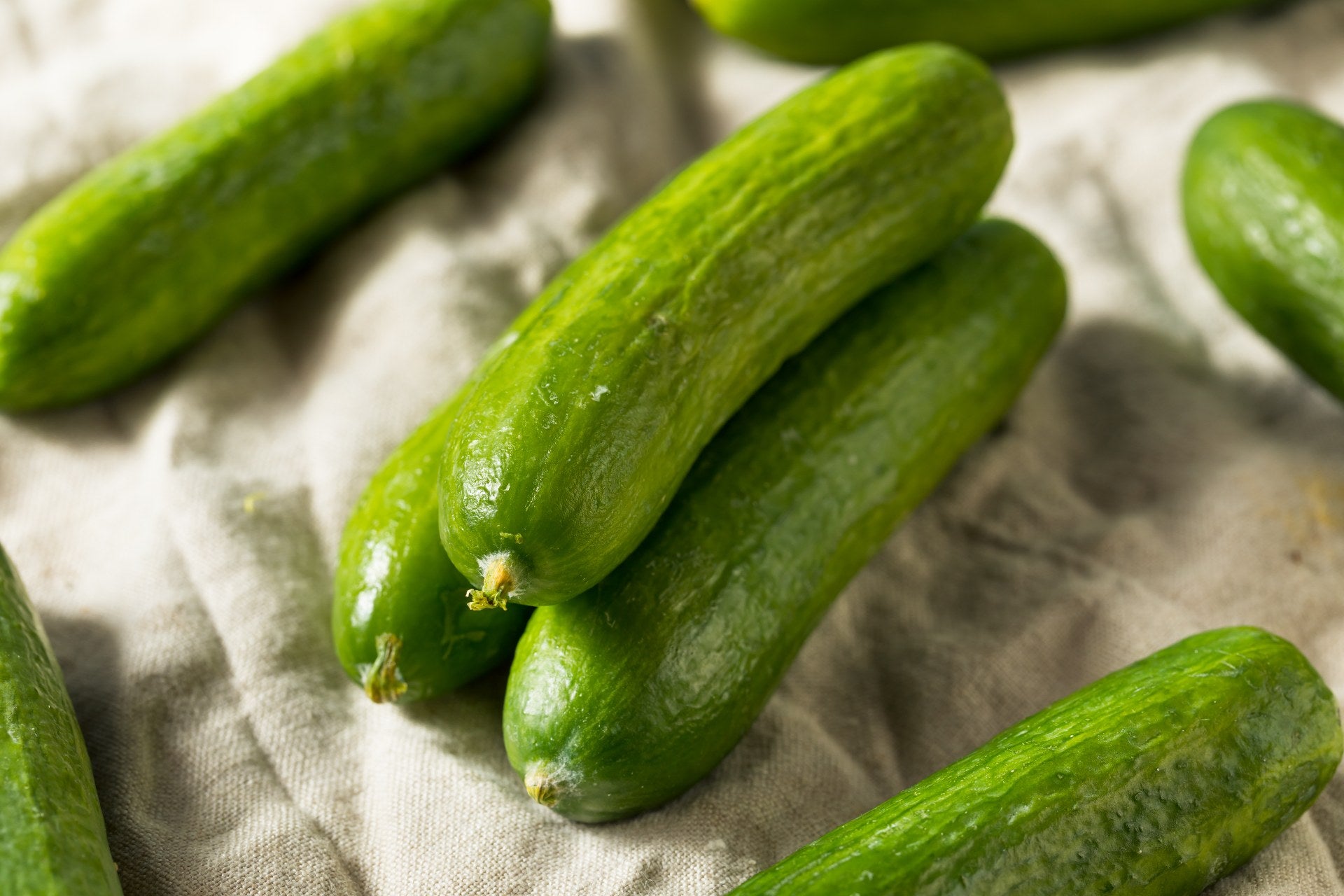There are nearly 100 different varieties of cucumbers. Some are commonly found in supermarkets or farmers markets, like English, Persian, and Kirby cucumbers, while others are rarer, like white cucumbers. Some are easily digestible, or “burpless,” while others require taming in tangy pickling liquid. But what all cucumbers have in common is a cool, refreshing, low-calorie crunch to explore in the kitchen.
From fresh salads and chilled soups to chicken dishes, sandwiches, and dips, cucumbers are versatile vegetables. Not only will they keep you hydrated in summer, but they’ll also give you an immune boost, being rich in vitamins A and C.
With so many cucumbers to choose from, we focus on eight of the most common varieties—from the familiar English cucumber to the petite Kirby—and discover a few surprises along the way.
1. English Cucumbers
Flavor & Texture
Long, slim, and elegant, English cucumbers are often sold wrapped in plastic to keep their skin fresh. They’re sometimes called seedless cucumbers (though they do have very tiny seeds) and are prized for their sweet, mild flavor and delicate crunch. Unlike some other varieties, their skin is thin and not bitter, so there’s no need to peel.
Best Ways to Eat
- Slice thinly for classic cucumber sandwiches
- Toss into a refreshing cucumber & dill salad
- Float a few slices in a glass of Pimm’s, gin & tonic, or elderflower spritz for a cooling summer drink
- Dice into cold soups like gazpacho or cucumber-yogurt soup
Fun Fact
Because English cucumbers are “burpless” (easy to digest), they’re often the go-to choice in Europe and North America for fresh eating.
Pro Tip: Keep your English cucumbers wrapped in their original plastic and store them in the crisper drawer—they’ll last longer without getting soft.





















